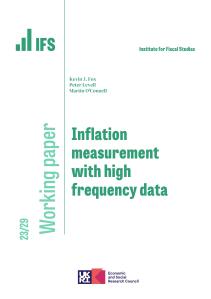They might not know it yet, and it is likely to pass the rest of us by entirely, but for more than two and half million families, today is a very big day. After a two-year hiatus, the rollout of universal credit to people still receiving so-called legacy benefits will restart.
You might be forgiven for forgetting that this was still to happen. It’s been all too easy to do so, not least following the furore over last autumn’s withdrawal of the £20 a week increase in universal credit and to tax credits.
The millions out of work and still on other legacy benefits never benefited from the increase and were largely ignored.
Rather quietly, most of the transition to universal credit has indeed already happened largely as a result of natural turnover in the benefit system. All new claimants, and those experiencing any significant change in circumstances, have already been moved on. Almost five million families now receive it.
The fact that we’ve not heard much about it recently is evidence enough that this all happened pretty smoothly; remarkably so given the prolonged birth pains which delayed the programme for years. We are already five years past the point at which universal credit was originally supposed to be fully in place.
The fact that it was possible to introduce the £20 increase at short notice in early 2020, and to make further changes within weeks of the autumn 2021 budget, are testament to the effectiveness of the new benefit. The antiquated technology underlying the rest of the benefits system makes such changes all but impossible without staggeringly long lead times.
The late Baroness Jeger made the same complaint when the method for uprating benefits was put on its current basis. That was in 1983.
From now on, the rollout will not just depend on natural turnover. Gradually, through to the end of 2024, everyone still receiving legacy benefits will need to make a new claim for universal credit. By then over seven million families, more than a quarter of the working age population, will be receiving it. Its sheer scale means that few things government does are more immediately important for living standards than the operation and generosity of universal credit.
The vast majority of those still to make the transition are currently either receiving employment and support allowance (ESA) — payable to people out of work as a result of sickness or disability — or are getting work tax credits. These are two groups who tend to claim support for long periods without major changes in circumstances, hence their continued reliance on these old-style benefits.
First the good news. Just over half the people being moved across can expect to be better off as a result of the move. Among the gainers will be those on ESA not in receipt of an additional payment known as the severe disability premium. They will get a boost in the generosity of their benefits. In addition, many low earners in work who are receiving both tax credits and housing benefit will gain.
That’s because universal credit is withdrawn less quickly as earnings rise than happens under the system it is replacing.
That should be the easy bit, though even some of those who will be financially better off may balk at some of the additional conditions they will face. Claiming universal credit typically requires a trip to a Jobcentre and engagement with a work coach, a process with which many in work on tax credits may be wholly unfamiliar and reluctant to engage with. Some, perhaps especially those on ESA with mental health problems, might struggle with the transition process itself. They will not be moved across automatically, rather they need to make a successful new claim. The Department for Work and Pensions is promising to go “slowly, slowly, slowly”, but the risks are evident.
While well over a million claimants stand to gain financially, getting on for a million will have lower entitlements under universal credit than they do today. Those who move on to it won’t see the cash level of their benefits change at the point of transition. But their benefits will be frozen until inflation brings their value down to their new level of entitlement. With inflation at current levels, that will happen quickly. Or to put it another way, their standard of living will fall fast. Tens of thousands of poor families will see their benefits frozen next year, rather than increased by the 10 per cent or so which will be required to keep pace with inflation.
Among the losers will be people in work and on tax credits who have savings in excess of £6,000.
Universal credit is much harsher on people who have modest amounts of savings. Another big group of losers will be disabled recipients of employment and support allowance who are in receipt of the severe disability premium, generally paid to those who live alone and struggle with basic living activities such as preparing food. The fact that this latter change, the flipside of the gains to be enjoyed by other ESA recipients, may be a defensible rationalisation of the current system, will be of little comfort to those losing out.
Transition will bring some other big, if temporary, inequities. If you move across to universal credit next March your benefit will be held at its current level, with no increase for inflation, and you’ll be a lot worse off next year than this. If you move across next April you will have received an increase of about 10 per cent to reflect inflation and your new entitlement will be set at that level.
As with much else these policies were not designed with anything like today’s levels of inflation in mind. Some mitigation, to at least slow the hit to people’s living standards, is surely called for.
This article was first published in The Times and is reproduced here with kind permission.









